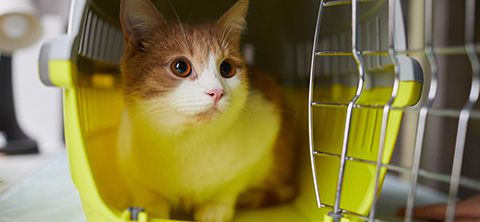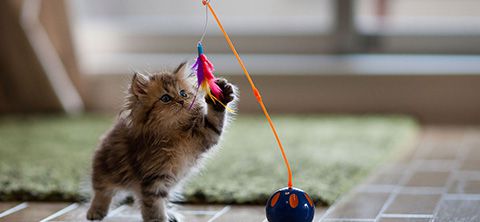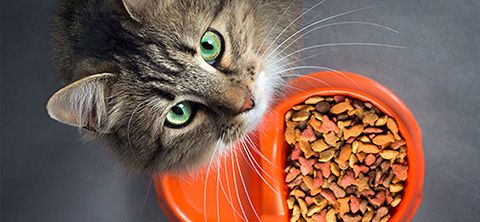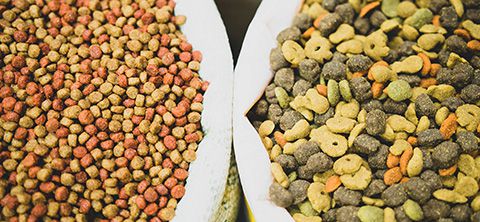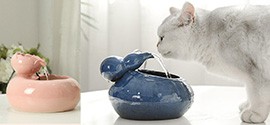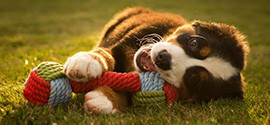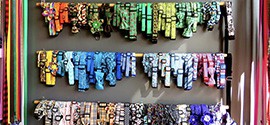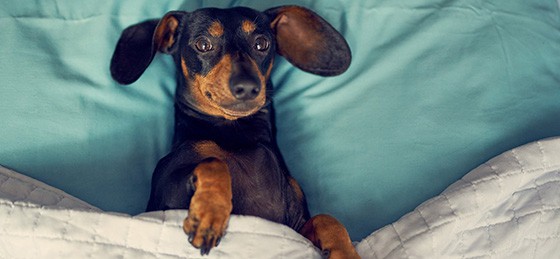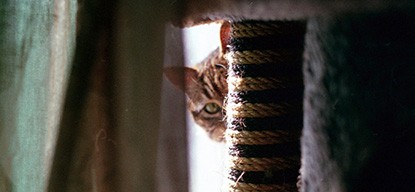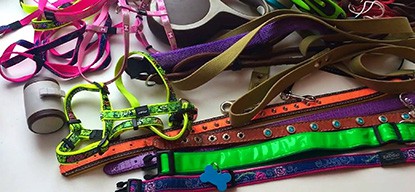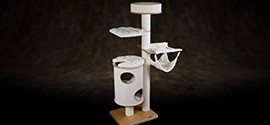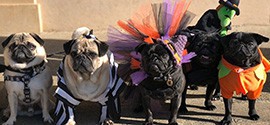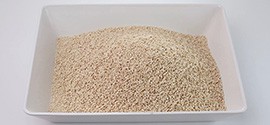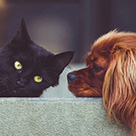
Best Pet Supplies
Pet-parents know that their pets deserve nothing, but the best. To the outside world, pets may appear as animals, but to pet-parents, they’re family. There’s a lot more to being a pet-parent than fixing a daily bowl of kibble, especially when it comes to ensuring healthy, happy pets. As you aim to improve the lives of your four-legged family members, My Pet Guru brings to you a list of must-have pet supplies to make sure that your furry babies are comfortable and having fun.
Food
Your furry friend deserves to eat as well as you do. This is why nutritional pet foods, supplements and treats are available in the market that contain the following ingredients:
- Omega fatty acids – Optimum balance of Omega 3 fatty acids to help promote cardiovascular health
- Vitamins C and E – These are nature’s antioxidants that maintain coat health of dogs and cats
- Taurine and L-carnitine – These ingredients prevent heart failure and diseases in pets
- Natural prebiotic fiber – This ingredient support the overall nutrient absorption capability and digestive health of pets
In the pet food industry, the following four diet types are used:
- Canned foods – They’re usually in a soft-sided or solid container with 60 to 78% water.
- Dry foods – They’re generally a bagged kibble that contains 3 to 11% water.
- Semi-moist foods – These are packaged in pouches and have 25 to 30% water.
Just like humans, dogs and cats are allergic to certain ingredients while other ingredients are good for their health. This is why you will increasingly find pet food manufactured free from gluten, lactose, additives, grains, preservatives and GMOs. Also, some pet foods come under the ‘complete food’ category that can be served to the pet without adding anything else. Other pet foods come under the complementary category and you will have to add something else to make it a meal.
The best way to select the right pet food is to read the label carefully and ensure that the food is intended for your particular pet. Cats and dogs have different nutrient needs. So, what works for Fido is not good for Fluffy. Also, the standards for nutrition vary as per the life stages of the animals including growth (for puppies and kittens), pregnancy & lactation and adulthood.
Feeding a kitten or puppy
Typically, puppies and kittens drink their mother’s milk until they are seven or eight weeks old. Small amounts of pet food can be introduced around three or four weeks. The young pets have to be given specially formulated food. As their growth rate is rapid, their nutritional requirements often exceed those of matured or adult pets. Veterinarians recommend feeding young pets kitten or puppy formulation until they’ve achieved 90% of its adult size. Generally, it takes 10 months for cats to reach maturity, small & medium dogs at 12 months and large-breed dogs at 18 months.
When it comes to Rottweilers, Labradors, Great Danes, Mastiffs and other large-breed dogs, the nutritional recommendation is different than small and medium dogs. As large-breed puppies have a genetic propensity to grow rapidly, they are prone to skeletal abnormalities. They have to be fed a diet that is specifically formulated for them. So, read the label and make sure that it is labeled for large-breed dogs.
Feeding an adult pet
Adult dogs need protein, water, carbs, fat and some minerals and vitamins to be healthy. The amount of food needed depends on the activity level and size.
Cats are meat-eaters and their diets have to be high in animal protein. While your dog can turn vegan (vegan dog foods are available in the market today), your cat cannot because cats need amino acids like, arginine, taurine, tyrosine and methionine that comes from animal sources. Also, the cat food should have fat providing energy and vitamins D, E and A.
A lot of adult pets are affected by obesity. So, you must monitor your pet’s weight and start a weight management diet so that future complications like, arthritis or kidney diseases can be avoided. Moreover, avoid overfeeding your pets.
Feeding pregnant pets
Pets that are pregnant or have given birth recently need high-calorie food. Cats usually lose weight when nursing kittens. So, they have to be kept on a diet that encourages weight gain.
Feeding senior pets
Pets are generally considered seniors when they are around 7-years-old. Large-breed dogs age more quickly and they enter the senior category when they’re 6-years old. When feeding your senior pet, make sure that the food is easier to digest and help with weight control.
Pet Treats
Traditionally, pet treats meant human food-scraps dropped to the floor during mealtimes. But, human food does not agree with the digestive systems of cats and dogs. Luckily, commercially-produced pet treats are available in the market. A treat is a snack packed with all the required nutrients and flavored deliciously to tantalize the taste buds of animals. You might have stacked up on all the pet food essentials, but did you get pet treats? Treats are used to train pets, as a reward and as a way to show love.
Types of pet treats
Dog treats include traditional dog biscuits, chewy and crunchy snacks with a meaty theme, meat products like, roast lamb bones, jerky and triple sticks, and items with no meat content like, milk treats or carrot treats. Also, dog treats can be categorized under the following:
- Dental treats – Dental treats are specifically manufactured to provide dogs with the right dental care. There are dental treats available for small to large-breed dogs and these treats help in reducing tartar build-up, prevent bad breath and keeps the teeth clean. A lot of these treats come in chicken flavor. You will also find calcium-enriched dog bones in milk flavor.
- Reward treats – These are treats that you give your dog when rewarding him for his good behavior or to show your love. There are chicken-flavored dog biscuits, meat jerky and so on.
- Energy treats – For all the jumping and running around, your dog needs energy. There are energy dog treats enriched with vitamins and calcium to make dogs energetic and also satisfy the urge to chew.
On the other hand, cat treats come in a range of fish or poultry theme including snacks that have a soft center and crunchy exterior and specifically formulated milk with low lactose content. Cats enjoy treats in flavors like, salmon rings, chicken jerky strips, chicken and tuna jerky. Cats love catnip treats and these are usually crunchy on the outside, but soft on the inside.
While dogs are omnivorous and you can feed them both vegetarian and non-vegetarian treats, cats are purely non-vegetarian. They like treats that come in flavors of meat and seafood.
Pet Toys
Pet toys are important as they can keep your furry friends occupied for hours. Toys are the perfect way for your pets to release their energy without destroying your slippers, sofa or anything chewable.
- Chewable toys – Chew toys are great for puppies and kittens when they’re teething. These toys can help curb their urge to bite and you must remember that your hand is not a toy.
- Interactive toys – These toys help to keep your pets active and alert. You can get squeaky toys, balls, rope toys, fishing rod toys and so on. Laser toys work very well with cats.
- Puzzles – These are toys that challenge the brainpower of your pet and stimulate it. They can be in the form of an electronic game or physical toys. These toys are known to keep pets engaged for a long time.
- Treat-dispensing toys – These are toys that contain treats for your cats and dogs. You can fill and refill them with your pet’s favorite treats. Your pet will have to figure out how to use the toy to get to the treat. Your pet will be occupied for hours trying to twist, turn and chew the toy.
Pet Devices
Pet devices are specifically created to make the lives of pet-parents much easier. From smart collars to treat dispensers, tech-friendly devices appeal to both cat and dog owners. Also, these devices help pet-parents ensure the safety of their furry friends when they’re at work.
Automatic pet feeder – This device automatically dispenses a measured amount of food at a set time. The machine typically comes with a bowl attached and if you are detained somewhere and cannot come home to feed your pet, you know that he/she is fed and full.
GPS tracking collar – Smart dog or cat collar using GPS location tracking technology will give you the peace of mind as you know where your pet is at all times. Some collars even measure the activity levels and track the behavior, body temperature, health and feelings of pets.
Pet cameras – These help to ease separation anxiety and also allow pet-parents to keep a watchful eye on their furry babies when they’re away. Pet cameras offer the most possible interaction with pets when you’re not home.
Pooper scoopers – These are devices that are used to pick up feces of animals from yards and public spaces, particularly those of dogs. Since cats are naturally clean animals, toilet training is a simple procedure with them. But, dogs take about 4 to 6 months to be fully trained.
Dog fences – Dog fences are not just to make sure that your pet doesn’t wander off, but also to protect passersby if your dog tends to growl and bark at them. Vinyl, wooden and chain link fences are some of the popular types of dog fences.
Other devices include secure pet door, self-cleaning litter box, de-shedding tool, nail clippers and trimmers, portable bowls, car seat for pets and so on.
Pet Care Supplies
Just stacking up food, treats and toys is not enough. You also have to stock up on basic health care products for your pet that will take care of problems like, tick and flea, ear and eye, wounds and more. The most common pet care products that you must have are:
- Toothpaste and toothbrush for cats and dogs – Dental health is important to animals as it is to you. You must never use human toothpaste and brush for your pets. You will find special toothpaste made specifically for dogs and cats. You will also find pet brushes.
- Pet shampoo – Bathing your pet using the right shampoo helps in improving your pet’s skin and coat. Also, it helps in maintaining the hygiene of your home. There are different types of pet shampoos and conditioners to choose from including hypoallergenic (for pets with sensitive skin), flea shampoo, general-purpose (comes with different scents and can be used for giving your pet a regular bath), medicated shampoo (to help with specific skin conditions) and aloe vera. You will also find shampoos and conditioners specifically manufactured for kittens and puppies. These are extremely mild.
- Flea and tick treatment – Flea and tick treatment products for pets come in the form of shampoos, sprays, pills, dips, collars and floggers. You must choose the right products to free your pet from fleas and ticks, along with freeing your home from such blood-sucking parasites. Most flea and tick treatment products offer relief for 30 to 35 days. But, there are also high-end products and pills that can give you 12 weeks to 3 months of relief from these parasites.
- Pet dewormers – Intestinal parasites like, roundworms and hookworms are found in kittens and puppies. They need to be dewormed at 2, 4, 6 and 8 weeks of age and then again at twelve and sixteen weeks of age. After this, they have to be dewormed again at 6 months and 1 year. As for adult dogs and cats, they need to dewormed twice a year for the rest of their life. Dewormers come in the form of tablets, pills, liquid and chewable tablets (for puppies and kittens). You are recommended to follow your vet’s instructions when deworming your pet.
- Vitamins and supplements – These make sure the life-long health and well-being of pets. Vitamins and some sort of dietary supplements are given to dogs and cats who are diagnosed with nutritional deficiencies or suffering from health problems.
Furniture for Dogs and Cats
As your pet is family, make them feel at home. The easiest way to make your pet feel secure, safe and comfortable is by getting all possible furniture that will make your pet happy. The most beloved and important pet furniture that you can get are:
- Beds – Cats and dogs are territorial by nature and they tend to gravitate toward the same areas for taking a nap, relaxing or sleeping. You can enhance their comfort by getting a bed. Beds are available in different sizes, materials, shapes, color and sizes.
- Playpens and perches – Playpens are the perfect places for dogs to be rowdy. Perches or cat trees are good for cats as they love to climb.
- Towers – Towers are very easy to assemble and they’re ideal if you are the owner of multiple cats. Most towers come with scratching posts.
- Scratching posts – Cats love to scratch and this is why you need a scratching post if you want to save your furniture and cabinets. Cats have this urge to scratch and these posts are useful as they allow for lounging, perching and climbing. This might not be useful to dog owners.
Harnesses and Collars
Pet collars, harnesses and leashes are a simple way to keep your dog or cat secure and safe. Collars often come with identification tags that ensure that your pet comes home, especially cats who like to roam outdoors. With a leash and harness or collar combo, you can take your pet for a walk at the park and check their behavior.
Leashes, collars and harnesses are available in a wide selection of materials, sizes, styles and colors. Nylon and leather are the most common material.
Cat Litter and Litter Boxes
Unlike dogs, cats are particular about where they go. Also, toilet training comes naturally to them. If you allow your cat to roam outside freely, it is wise to put a litter box outside and fill 2 o 3 inches of the box with cat litter. The cat litter found in the market is typically fine particle, unscented and clumping clay litter. You will find a variety of cat litter pan, automatic cat litter boxes, disposable litter box set and covered litter boxes that offer your cat privacy while she is going her business. Cat litter boxes are manufactured to suit the particular preferences of cats.
Insurance for Dogs and Cats
Similar to human health insurance, there is pet insurance that covers tests, certain illnesses, procedures and other activities related to the well-being and health of pets. The best insurance solutions for your dog or cat are:
- Accident-only insurance – Accidents can happen at any time. This insurance is perfect for pets that do not have any pre-existing health conditions.
- Accident and illness insurance – This is for pets who are prone to falling sick. Such pets need to be protected against illnesses and accidents.
- Comprehensive pet insurance – This insurance covers accident, illness and routine veterinary care.
Get all the necessary items and give your pet a healthy and happy life.

